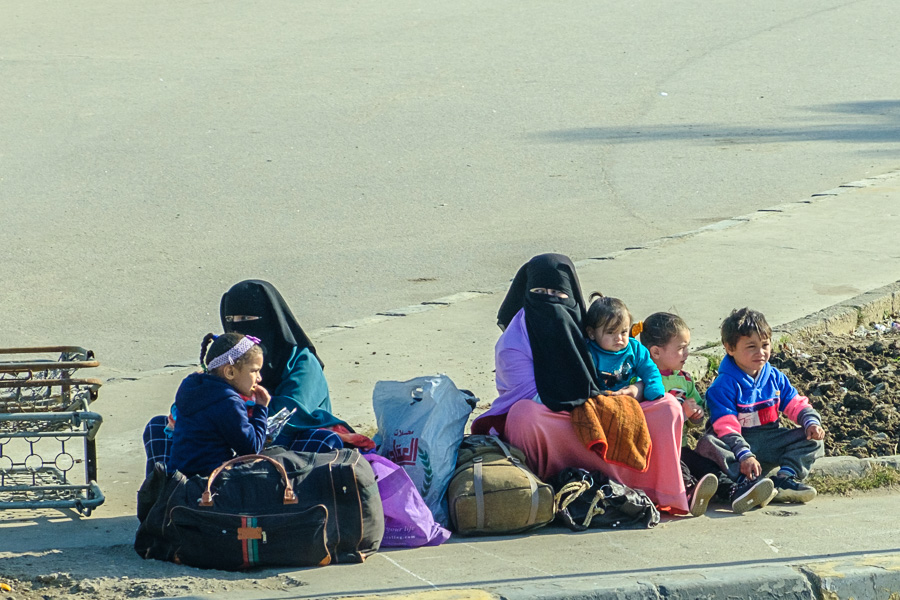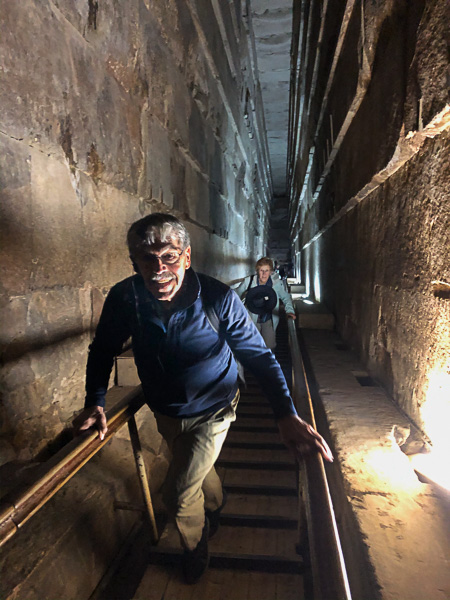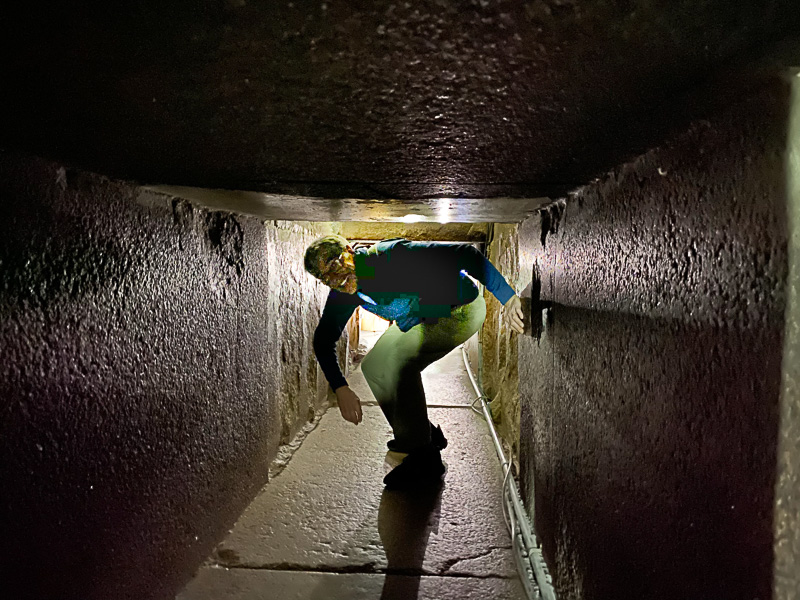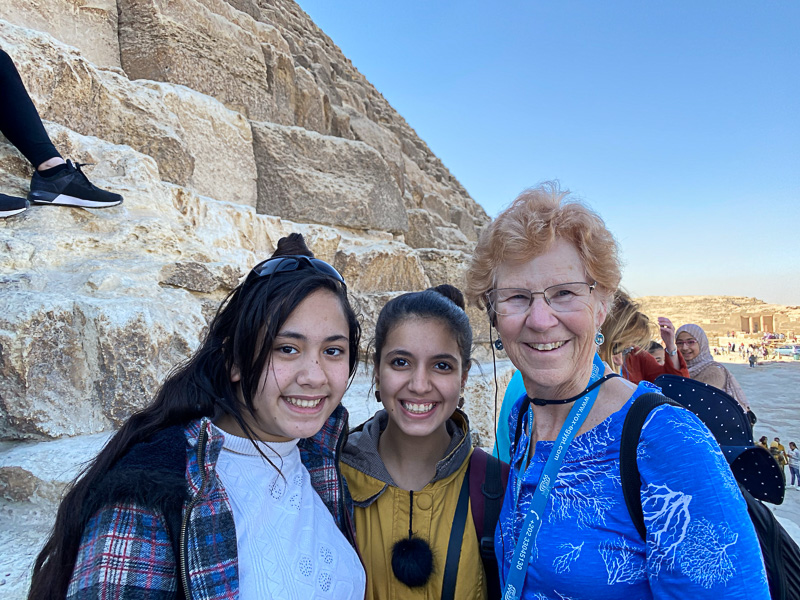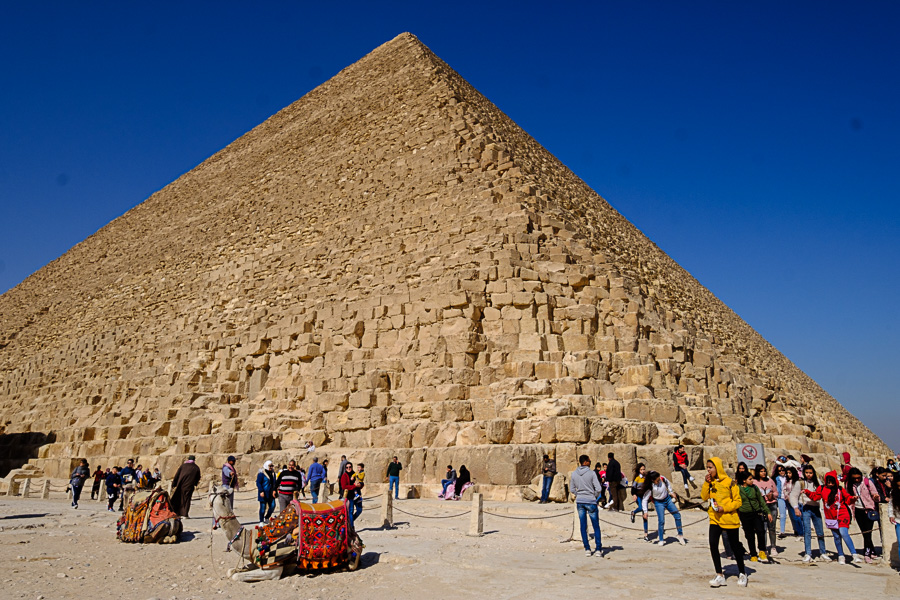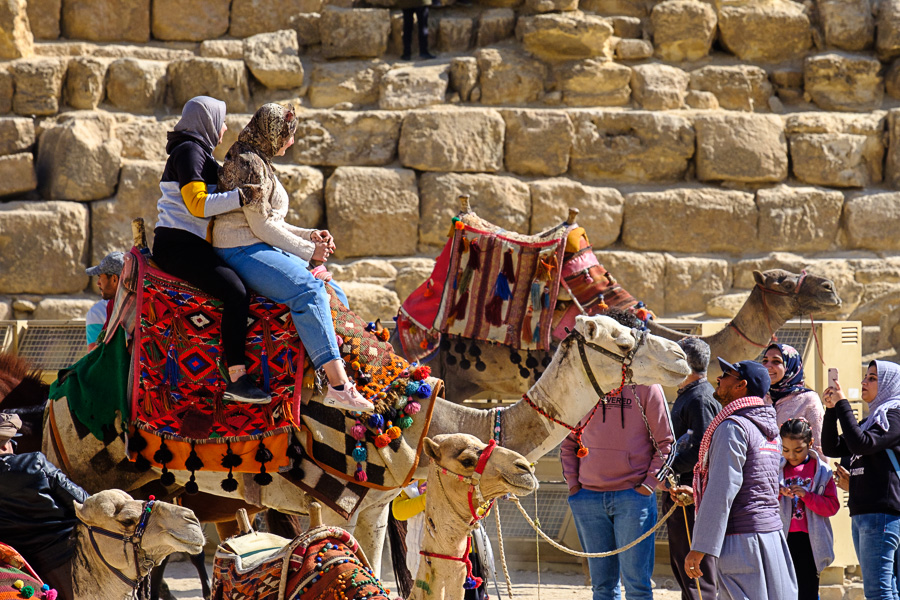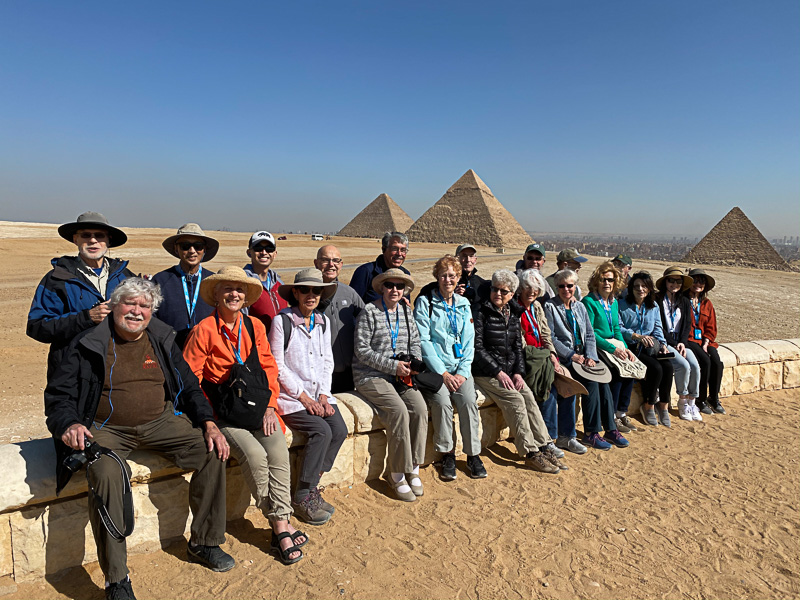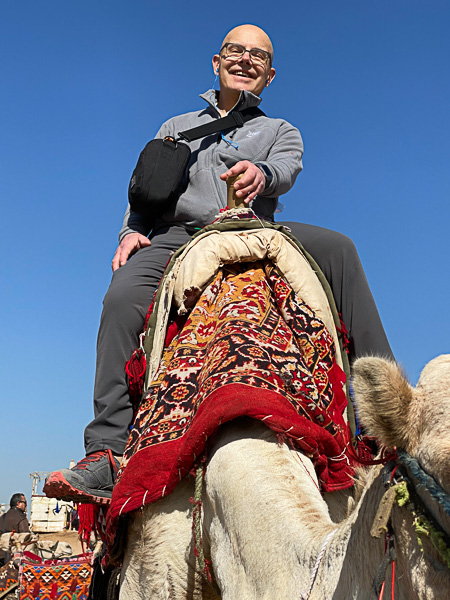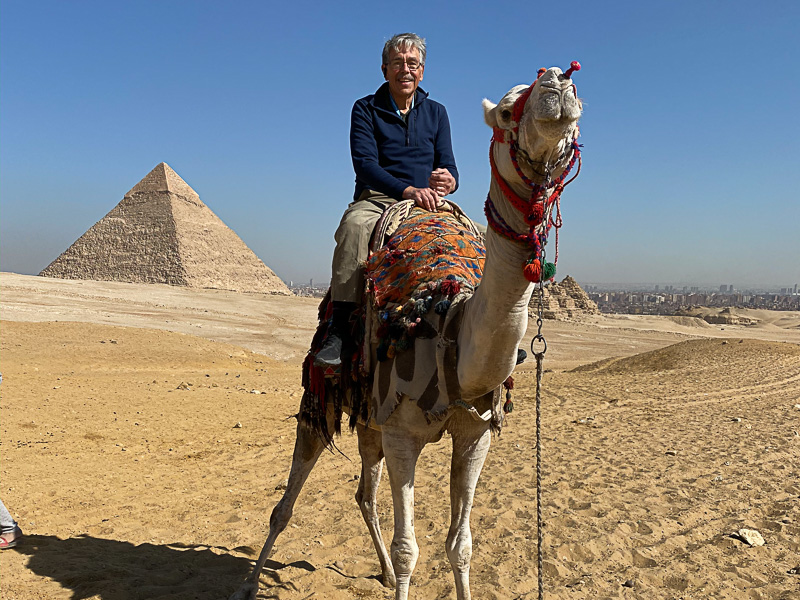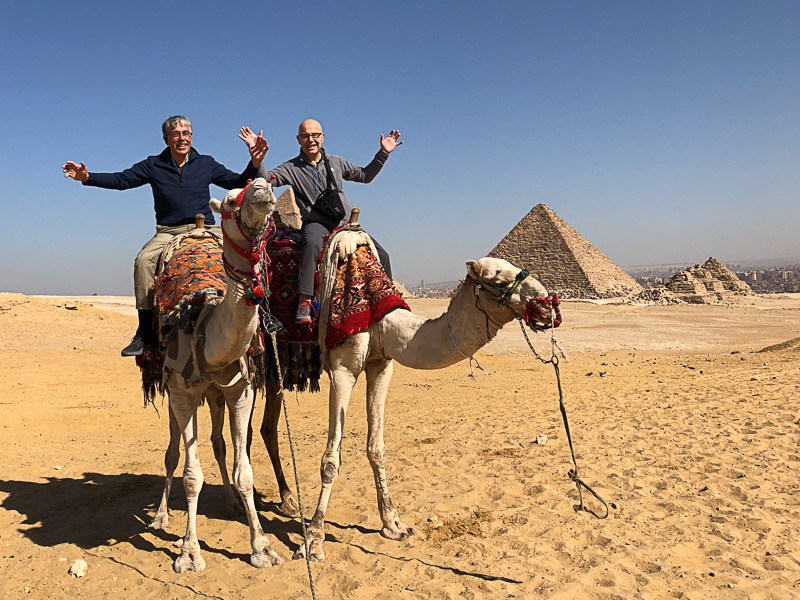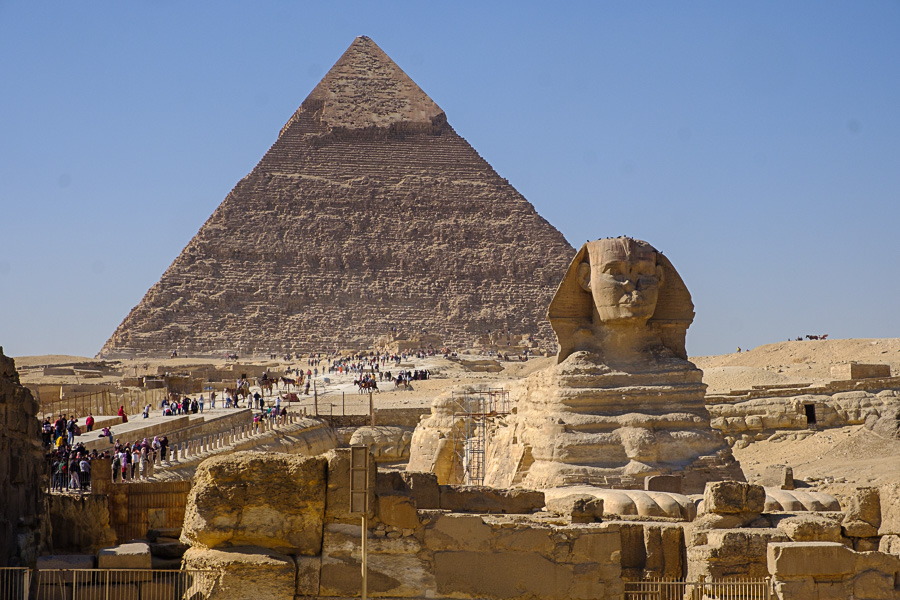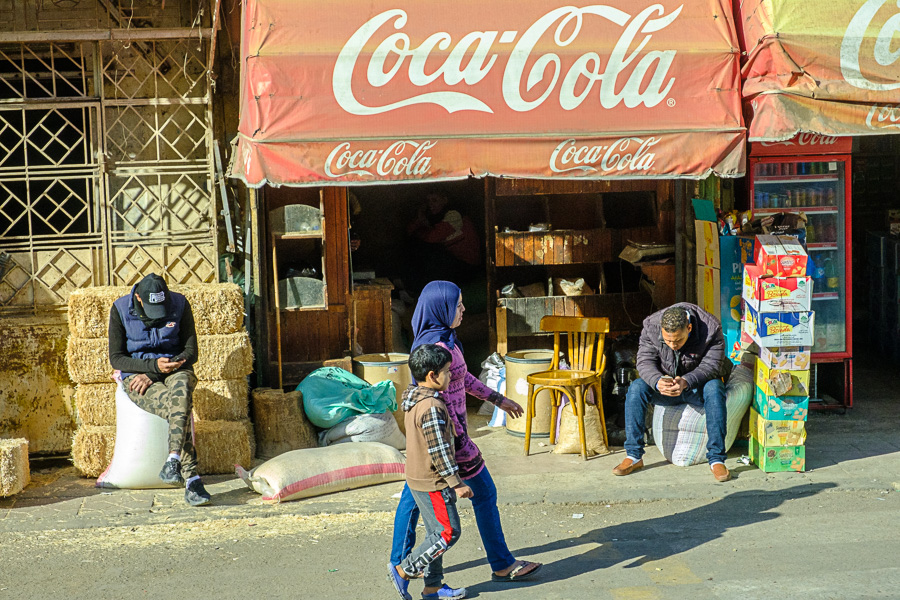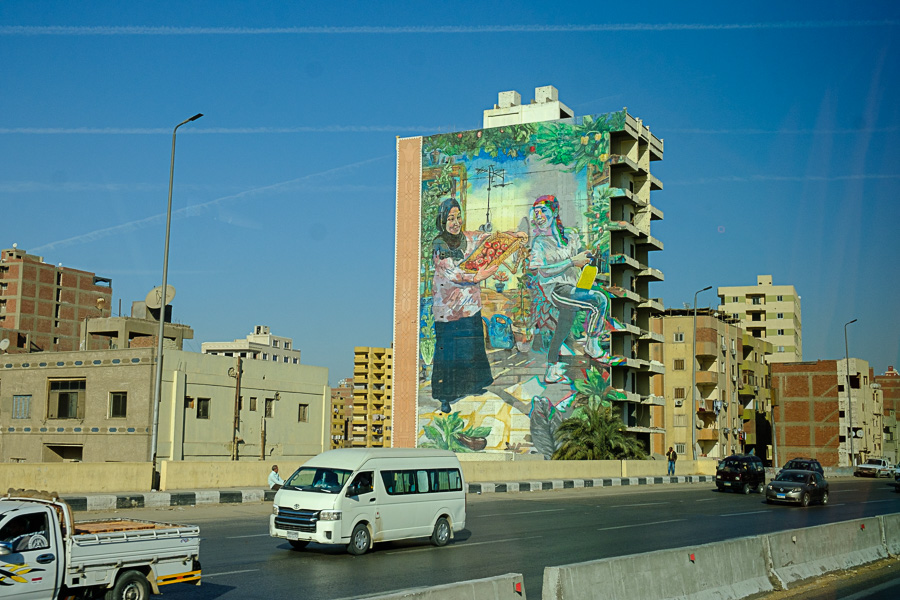Ok, one time we got taken for a ride on camels. More about that later. The other time, while wandering around the Great Pyramid at Giza, brother Doug and I were separately sold Egyptian trinkets by two fast-talking salesmen. Here’s the dialog from my guy:
“Where are you from? America? I love Americans. My wife is from Washington D.C. Here is a gift for you because I love Americans and want to give you this scarf. No, no money, it’s a gift.”
Within 30 seconds I had a second scarf (for my wife) and several vaguely pyramid-shaped stones (for my kids). And then the scarf was tied around my head, Yasser Arafat style, and he was taking my picture in front of the pyramid.
“Let me give you a little something for all these presents.” I had maybe $10 in Egyptian pounds in my pocket. I gave him 100 pounds ($6). “No, that’s not enough. Some give me $50, some $20.”
“But that’s all I have (fingers crossed behind my back.” And I have to catch up with my group.” It took me another 10 minutes to end the transaction.
Doug’s dialog was almost exactly the same, except his guy’s daughter is a student in California. I don’t know how much he took Doug for (it’s not polite to ask the fleecee how much fleece he lost) but they parted more amicably than my guy and I did. Another guy approached me; his is from Chicago. Another guy offered me 10,000 camels for my wife, Judy.
I was sorely tempted by the 10,000 camel offer until, that is, I rode on one. Then I was just plain sore.
Of course, Doug and I went camel riding (of course the two Judys didn’t). For 10 bucks U.S. we were mounted onto a kneeling camel. “Lean back,” was the instruction at which time the camel arose to his feet (or her feet? I didn’t check). I figured out what “lean back” meant about halfway through the camel’s rising, at which point I almost did a swan dive over the head of my camel (they get up hind feet first). The ride was kinda fun, if bumpy, and the blankets were more comfortable than a leather horse saddle.
Now I’ve taken some risky pictures in my day. I once photographed an on-coming locomotive while standing in the middle of the trestle at Onawa (the engineer frantically blew his horn to get me out of the way). I once dived into the Pacific Ocean to photograph an eight-foot Galapagos shark (I had a visual sighting but no picture). But let me tell you, one shot with my iPhone from the back of that camel and I tucked the phone away and held on with both hands for dear life. The thing would sway from one side to the other with no other purpose apparent to me than to dislodge me from his back and deposit me in the Egyptian sand. The young fellow leading my camel on this 20-minute journey was nice enough to take my picture.
All of this took place at the site of today’s main event: a visit to the pyramids in Giza, the town across the river from Cairo. There are three pyramids in this complex plus a real life sphynx carved from a single piece of stone.
Let me quote from Wikipedia to give you the historical background.:
The Giza pyramid complex, also called the Giza Necropolis, is the site on the Giza Plateau in Greater Cairo, Egypt that includes the Great Pyramid of Giza, the Pyramid of Khafre, and the Pyramid of Menkaure, along with their associated pyramid complexes and the Great Sphinx of Giza. All were built during the Fourth Dynasty of the Old Kingdom of Ancient Egypt. The site also includes several cemeteries and the remains of a workers’ village.
The site is at the edges of the Western Desert, approximately 9 km (5 mi) west of the Nile River in the city of Giza, and about 13 km (8 mi) southwest of the city centre of Cairo.
The Great Pyramid and the Pyramid of Khafre are the largest pyramids built in ancient Egypt, and they have historically been common as emblems of ancient Egypt in the Western imagination.[1][2] They were popularised in Hellenistic (Greek) times, when the Great Pyramid was listed by Antipater of Sidon as one of the Seven Wonders of the World. It is by far the oldest of the ancient Wonders and the only one still in existence.
The Pyramids of Giza consist of the Great Pyramid of Giza (also known as the Pyramid of Cheops or Khufu and constructed c. 2580 – c. 2560 BC), the somewhat smaller Pyramid of Khafre (or Chephren) a few hundred meters to the south-west, and the relatively modest-sized Pyramid of Menkaure (or Mykerinos) a few hundred meters farther south-west. The Great Sphinx lies on the east side of the complex. Current consensus among Egyptologists is that the head of the Great Sphinx is that of Khafre. Along with these major monuments are a number of smaller satellite edifices, known as “queens” pyramids, causeways and valley pyramids.[3]
https://en.wikipedia.org/wiki/Giza_pyramid_complex
These pyramids are thus 4,600 years old and still standing. The major cause of destruction has been scavenging. They were once coated with an external layer of fine-grained limestone. During the Middle Ages builders from Cairo borrowed the exterior facing material and repurposed it, rather than quarrying their own material.
Around 1,000 CE the ruling authority (a foreigner; Egypt lost its independence for good to Alexander the Great in 331 BCE) ordered a shaft to be opened into the side of the Great Pyramid. His hope was to find untold riches in the Pharaoh’s burial chamber. He got lucky; the shaft intersected the pyramid’s built-in passageway that led to the burial chamber. Unluckily, the chamber was empty, probably robbed long before. But that work was good luck for us, because Doug, my Judy and I all clambered through narrow, low-ceiling passageways to the see the empty sarcophagus.
An added bonus: today, January 26, is the day after Independence Day in Egypt. The Arab Spring demonstration that led to the downfall of President Morsi occurred on January 25, 2001. Morsi, a leader of the Muslim Brotherhood, lasted about a year before the military ousted him from office. For us it meant that there were lots of Egyptian kids and their families at the pyramids, far outnumbering tourists, especially Americans. A number of teenage girls asked to take selfies with us. Lots of fun!
We broke for lunch around 2 PM: mixed Egyptian grill in a restaurant overlooking the sphynx. See the pictures for details of the sphynx. While viewing the sphynx, I was interviewed for Egyptian TV Channel 1 – my impressions of Egypt and tourism in Egypt. “Tell our audience whether you think they should come to vacation in Egypt.” I, based on less than 24 hours in country and despite my experience with the scarf salesman, shamelessly plugged Egypt as a prime destination for American tourists.
In all, a great day under sunny skies and temperatures in the mid 60s. We
We have down time from our return (about 3:30 PM) until the welcome dinner at six. Normally I’d be out viewing the Nile River on foot. It’s just across the street from our hotel. But tomorrow we have an early start to go by plane to Aswan. Wakeup call at 2:00 AM and on the bus by 3. Tomorrow night we’ll be on board our ship to cruise Lake Nasser, the huge man-made lake behind the Answan High Dam.
And by the way, we won’t have Internet service on board, so you’ll have a couple of days respite from my prattling.

